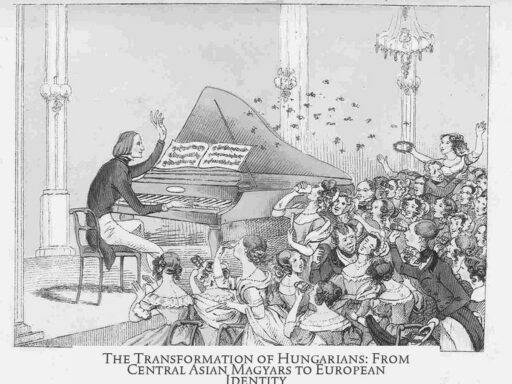The strategic advantage of star-shaped forts lay in their enhanced defense against cannon attacks, enabled by their unique geometric design. These forts originated in Italy during the 1500s and remained effective through World War I. Their layout improved upon medieval fortifications by countering the increasing power and accuracy of artillery.

Traditional medieval castles featured high vertical walls that were vulnerable to cannon fire. Star-shaped forts replaced these tall walls with low, thick, and angled walls. This structural change helped absorb and deflect cannonballs more effectively, reducing damage and increasing durability.
The distinctive star shape consists of multiple projecting bastions. These bastions provide overlapping fields of fire, allowing defenders to cover all approaches. Cannons and firearms mounted on these bastions could fire parallel to each wall section. This tactic, known as flanking fire, created deadly crossfire zones along the fort’s perimeter. Any attacking force attempting to scale the ramparts faced concentrated gunfire from multiple angles, making assault much more difficult.

This comprehensive coverage eliminated blind spots and minimized weak points, which were common in earlier fort designs. The geometric form ensured that enemy troops could not approach a wall without exposure to intense defensive fire.
Over approximately 400 years, star-shaped forts proved highly effective and were widely constructed across Europe and beyond. Their design reflected evolving military technology and tactics, adapting fortifications to withstand artillery advancements.

- Originated in Italy during the 1500s.
- Low, thick walls resisted cannon fire better than medieval fortifications.
- Bastions created overlapping fields of fire for comprehensive defense.
- Flanking fire along walls prevented enemy scaling attempts.
- Used extensively for 400 years due to proven defensive efficiency.
What Was the Strategic Advantage of Star-Shaped Forts?
Star-shaped forts gave armies a serious edge in defense by combining smart design with resistance against cannon fire. These forts weren’t just pretty shapes carved into the landscape; they were engineered from the ground up to survive and repel the evolving firepower of their time. Let’s explore how these angular fortresses changed the game and why their legacy stretched all the way from the 1500s to World War I.

What was going on before star-shaped forts? Castles and walled medieval towns stood tall with high, straight walls. Those walls looked imposing, but when cannons arrived, this medieval-style defense turned into Swiss cheese pretty fast. The massive walls simply crumbled or were easily scaled, so military engineers needed a fresh approach.
The Birth of a New Fortress: Italy in the 1500s

The star-shaped fort concept originated in Italy during the 16th century. Sometimes called Trace Italienne, this style was revolutionary. Instead of towering, thin walls, star forts featured low, thick fortifications with points (or bastions) protruding like the arms of a star.
Why? Because these points allowed defenders to cover every angle of attack without leaving blind spots. Imagine trying to sneak up on a fortress that can shoot sideways and diagonally with cannons and muskets. Not so easy, right?

How the Star Shape Made a Difference
Resisting cannon fire took center stage in the design. Medieval walls shattered under cannonballs, so the thick walls of star forts were built to absorb and deflect these blows more effectively. Their low profile made them less vulnerable to direct hits.

Moreover, the star shape wasn’t just for show. It allowed defenders to fire along the faces of walls—in military terms, this is called flanking fire. If an enemy tried to scale one part of the wall, defenders on the adjacent bastions could shoot along the wall, turning the attackers into sitting ducks.
Think of it as a 360-degree security camera mixed with strategically placed missile launchers. Any enemy that got too close was met with a deadly crossfire, making assaults costly and difficult.
Long-Lasting Defense: Why Star Forts Stayed in Use for Centuries
The design wasn’t a short-lived fad. For over 400 years, star-shaped forts stood as a frontline defense system across Europe and in colonies worldwide. Their ability to repel attackers and resist cannon fire made them invaluable. Military architects continually built and improved these forts in regions where artillery attacks were a threat.
Even as warfare advanced, and new guns emerged, the star shape adapted, proving that good engineering lasts. They even saw active duty through World War I, despite modern technology shifting towards airplanes and tanks.
Practical Tips and Insights From Star Forts:
- Lesson in Overlapping Defense: The bastions worked in tandem, creating zones where fields of fire overlapped—minimizing any weak points.
- Thicker is Better: Low, thick walls might seem less intimidating but offered superior protection against modern artillery.
- Design for Dead Zones: Unlike old walls vulnerable to blind spots, star forts aimed to eliminate areas where defenders couldn’t see or shoot attackers.
Military engineers today can learn from this—coverage and redundancy remain central to good defense.
Why Not Keep Building Star Forts Forever?
Despite the stellar performance, star-shaped forts eventually faded with the rise of air power and even bigger artillery. Airplanes could bypass walls entirely, and mobile warfare made static fortifications less relevant.
Today, the surviving star forts are a glimpse into centuries of military innovation. Some might think they look like giant alien playgrounds, but they were tactical marvels where geometry met artillery science.
Final Thoughts: The Star Shape as an Innovation
Star-shaped forts show that defense is about anticipating your enemy’s technology and staying one step ahead. They combine thick, low walls to resist cannonballs and a design that leaves attackers exposed to gunfire from multiple angles.
Imagine you’re an invader facing one of those forts: every approach is watched, every wall faces deadly fire, and your artillery can only do so much against walls designed to laugh at cannonballs. That’s the real strategic advantage these forts brought to the battlefield.
So next time you see a star-shaped fort on a map or a travel brochure, remember: it’s not just historic architecture. It’s a weapon of geometry and grit, forged in the artillery age and reigning supreme for centuries.
What made the star shape effective against cannon attacks?
The star shape allowed walls to be lower and thicker, making them resilient to cannon fire. The angles also prevented blind spots so defenders could fire along every wall.
How did the design improve defensive fire coverage?
The pointed bastions let defenders fire sideways along the walls. This created overlapping fields of fire, covering all attack routes and stopping enemies from scaling walls unseen.
Why were star-shaped forts preferred over medieval castles?
Medieval castles had high, thin walls vulnerable to cannon. Star forts had low, thick walls and angled bastions designed specifically to resist cannon and improve defense.
When and where did star-shaped forts first appear?
They first emerged in Italy in the 1500s. The design remained popular for about 400 years, through to World War I, due to its effectiveness against artillery.
Did star-shaped forts influence military architecture beyond Europe?
Yes. Their success led to global adoption. Many colonies and cities worldwide built star forts to defend against cannon-based attacks well into the 19th century.



